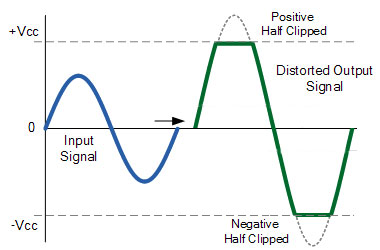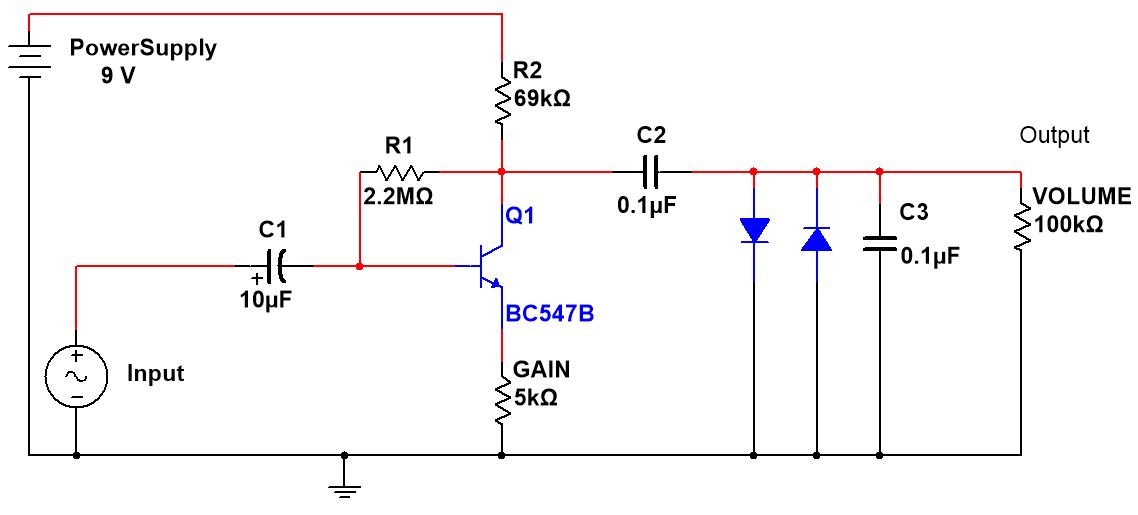Theory on a Distortion Pedal
An electric guitar (or bass) produces a voltage signal, which travels through the cable into the amplifier. The amplifier/speaker turns this voltage signal into sound. By manipulating the signal before it reaches the amp, we can get different effects.
The raw signal from the guitar will look like a clean sine wave. What we are looking for is to clip the tops and bottoms of the wave.

The first thing we need to to the signal is filter out any DC offset with the capacitor. Next, we need to amplify the signal. How much we amplify the signal is controlled by the "gain" knob. Another capacitor is inserted to remove any DC offset the amplifier added. The last thing we need to do before we get a proper distorted signal is to actually distort it. The 2 diodes do this by chopping off the tops and bottoms of the sine wave. Finally, a resistor is used to bring the signal level back down so we don't blow out our ear drums. This is the "volume" knob.

The diodes clip the voltage since they can only have a set voltage across them. If the signal is anything under this, then nothing happens to the signal. If the signal goes over this value, the diode turns on and clips the signal voltage. One diode clips the top (positive part) and the other clips the bottom. You don't need both to get the effect; different combinations result in different sounds.
You can also use this voltage clamping property to make a voltage regulator using "Zener" diodes, but thats another project.
Since the voltage at which the diodes start clipping is fixed, we can adjust how much they clip by changing the magnitude of the signal. The capacitor with the diodes (C3) smooths out the signal a little bit. This makes the distortion effect less harsh. The large the capacitance, the softer the distortion effect. Get a big enough capacitor and you wont hear any effect.
